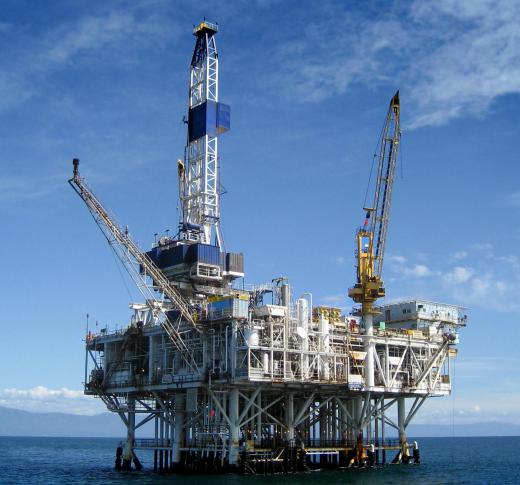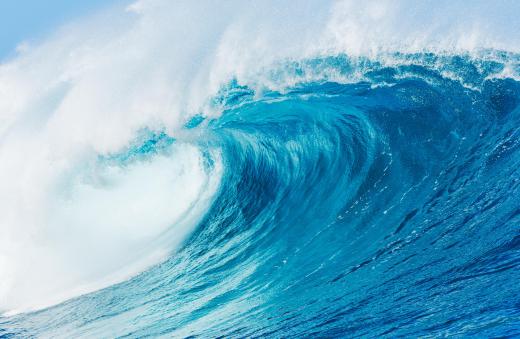A drilling rig is a mechanical structure designed primarily to create shafts in the ground, known as boreholes. Though the most common conception of a drilling rig is for use in petroleum exploration and extraction off shore, the drilling rig is actually used for a wide variety of purposes, from oil and gas to water well drilling, for mineral exploration, and environmental and construction purposes. The size of a drilling rig can also vary greatly depending on their needs, with portable units that can be transported by truck to massive structures designed to penetrate miles into sub-sea terrain.
Various methods for extracting materials from underground or exploring what's there exist with drilling rigs. The most common method with petroleum drilling rigs is to pump down a slurry of mud and water containing chemicals such as bentonite clay to cool the diamond cutting head as it penetrates into the earth. Other methods include using compressed air, such as the percussion rotary air blast drill (RAB) most often used for mineral exploration. Sonic waves, hydro-jet drilling using superheated water, and flame jet drilling, where the drilling surface is bombarded by a hydrogen flame at around 4,000° Celsius (7,232° Fahrenheit), are other methods used in the industry.

Portable land-based boring for environmental, geothermal, construction, and water-well drilling is showing increasing specialization in drilling rig design. Small robotic units mounted on caterpillar treads that drill up to 50 feet (15.24 meters) exist on up to large scale rigs that can drill down to 1,500 feet (457.2 meters) in depth. These smaller scale drills usually incorporate a form of pumpjack, which is a portable scaffolding system set up by foot pedals, allowing the user to place the rig quickly at various locations. Pumpjacks were a common sight on the Texas frontier in the US in the early days of oil exploration there, and are still used as convenient exploratory drill systems.

As underground oil deposits become increasingly difficult to locate, the oil platform technology to find these deposits is advancing as well. Brazil currently leads the world in its plans for advanced deep-water drilling, with the intention to drill into large offshore deposits that exist 5.6 miles (9 kilometers) below the surface of the ocean, including below 3.1 miles (5 kilometers) of solid rock and 1.2 miles (2 kilometers) of salt deposits. Typical drills in the Gulf of Mexico penetrate to a depth of less than 1 mile (1.6 kilometers). The deepest offshore drilling rig record is held by Russia, with the Sakhalin-I well at 7.7 miles depth (12.4 kilometers), drilled in 2011.
